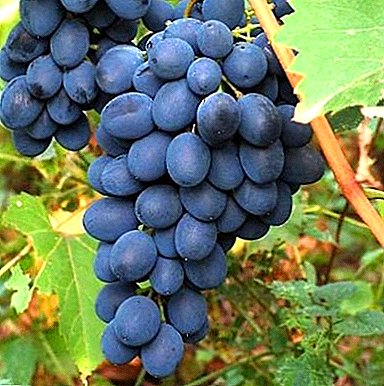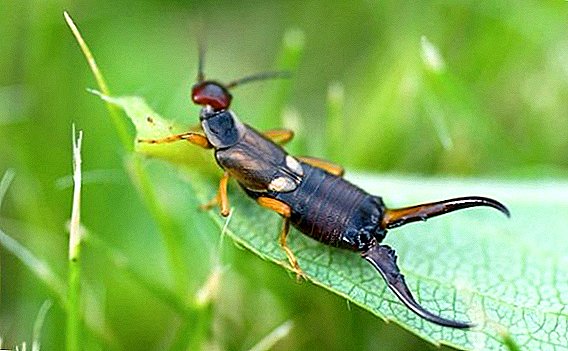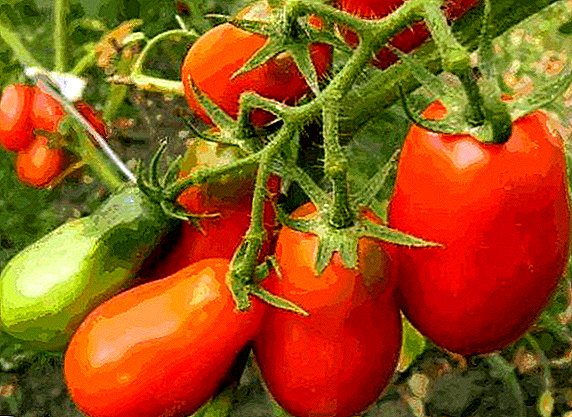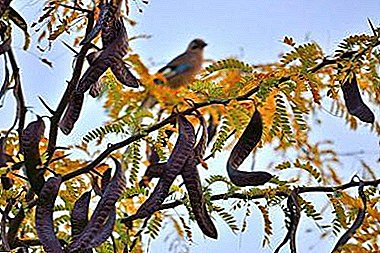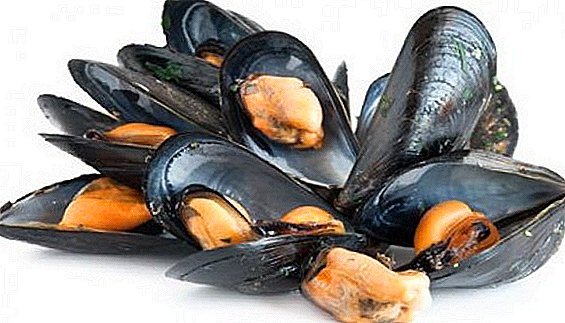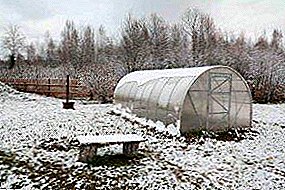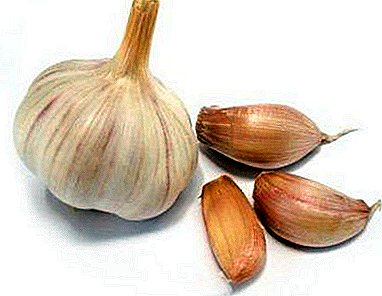 Garden Flower The Imperial Grouse is a charming perennial plant, so let's take a closer look at its planting, care and reproduction.
Garden Flower The Imperial Grouse is a charming perennial plant, so let's take a closer look at its planting, care and reproduction.
Grouse Imperial: description
The Imperial Grouse is a completely non-capricious plant, and if it is taken care of on time and correctly, then there will be no problems with it. The plant belongs to the lily family, but it is this variety that has large drooping flowers that are very similar to bells. Grouse flowers grow on stems whose height reaches 1.5 meters. Grouse is planted in rockeries, alpine hills and rock gardens.
 The peculiarity of the grouse stalk is that even if the flower itself bends, the stem will keep straight to the end. The grouse has 6 flowers, their color is brown-orange. Grouse blooms not for long, only 20 days.
The peculiarity of the grouse stalk is that even if the flower itself bends, the stem will keep straight to the end. The grouse has 6 flowers, their color is brown-orange. Grouse blooms not for long, only 20 days.
Did you know? In Europe, hazel grouse is known under the name "Tears of Mary" and "The Tsar's Crown".
Grouse breeding
There are 2 ways of breeding grouse. Each has its own characteristics and disadvantages. Choose the best for yourself and for the life of the plant.
Seed method
 The first way is to grow the Imperial Grouse from seeds. Seeds can be removed from the seed box when it is completely dry. Before planting seeds, you must enrich the soil with nutrients, because grouse will grow on it for several years. Every year new shoots need to be fed. Planted seeds to a depth of 1 cm. Between the rows and in the furrows should be about 10 cm wide.
The first way is to grow the Imperial Grouse from seeds. Seeds can be removed from the seed box when it is completely dry. Before planting seeds, you must enrich the soil with nutrients, because grouse will grow on it for several years. Every year new shoots need to be fed. Planted seeds to a depth of 1 cm. Between the rows and in the furrows should be about 10 cm wide.
After sowing the seeds they should be sprinkled with peat 2 cm. Seed shoots will be next spring. In the summer of two-year bulbs need to dig and store in a dry place. This is done to protect them from moisture that accumulates in the soil. Reproduction of hazel grouses by growing from seeds is a long process that will take from 7 to 10 years. In practice, it is used by professionals on an industrial scale.
Important! This process is complicated in execution, and some of the onions may not survive.
Vegetative methods
 The second method is vegetative reproduction of hazel grouses. The main bulb, or as it is also called - the mother bulb, grows and can be divided into bulbs-kids. It is then that they need to grow for several years until they bloom. For easy separation of the children from the mother, you can dig out the bulbs 1 time in 2 years.
The second method is vegetative reproduction of hazel grouses. The main bulb, or as it is also called - the mother bulb, grows and can be divided into bulbs-kids. It is then that they need to grow for several years until they bloom. For easy separation of the children from the mother, you can dig out the bulbs 1 time in 2 years.
For the artificial separation of the bulbs, it is necessary to break it and dry the divided parts. Divided grouse bulbs require planting in open ground earlier than whole ones.
Planting hazel grouse in autumn
Immediately after the purchase of the seed material of the Grouse Imperial, it should be planted, it is better to do it in the fall. This plant is convenient because it does not need to replant it every year, it multiplies with underground bulbs.
When to plant grouse
The best time for planting grouse is September-October. If you decide to plant them in November, then mulch the soil and close the leaves after planting. Late November, you can not plant, because then the flowers do not grow and bloom. Before planting the bulbs, disinfect them with a solution of potassium permanganate and sprinkle with charcoal.
Important! Grouse bulbs do not have protective scales, and because of this they dry quickly. Therefore, do not buy them in the fall, at this time they are already overdried and will not be able to germinate next season.
How to plant grouse
How to plant grouse imperial autumn?
- To begin, choose a place. It should be sunny or with penumbra.
- The soil should not be too wet and cold, otherwise the bulbs will immediately begin to rot.
- The prepared landing site should be dug up, with the addition of sand. And how good the soil would not be, it should still be mixed with peat or humus.
- The depth of planting is determined by multiplying the length of the bulb by 3.
- We put sand on the bottom of the hole, put the onion in the bottom down, straighten the roots and fill it with earth.

Bulb selection
Hazel grouse, so that planting and caring for it in the open field ended in a positive result, should be prepared in advance. Therefore, the planting material, which are bulbs, should be bought at the beginning of summer. After the purchase is worth an inspection of the bulb. It looks like a flattened ball and has a through hole. Bulb weight ranges from 500 g to 1 kg. External signs of disease, too, should not be observed. Pay attention to the color of the hazel grouse, which is shown on the package. A grouse can have only a red-yellow-orange color, there can be no other colors.
Did you know? Grouse deters harmful insects, moles and mice.
Plant Care
Hazel grouse, or as it is also called, fritillary requires planting and care, but this process is not at all complicated, although it takes a long time. The main thing is to have patience and by your efforts grow a wonderful flower.
Care of planted onion
After planting the bulb, expect that taking care of it will take a lot of free time. However, it all depends on the correct fit and climatic conditions. If the autumn is a little rainy, then you yourself must water the hazel grouse before the onset of frost. “Tsar's Crown” is a frost-resistant flower, but for its further cultivation for the winter, the site will need to be covered with mulch or other covering materials (film, agrofibre).
Care for sprouted grouse
 To grouse flower, as soon as it sprouted after planting, should be applied and careful care. First you need to remove the material that covered it from the winter cold. This is done so that the sprouted grouse began to receive sunlight. It is not necessary to touch the soil itself, the roots could rise during the winter, and if you carelessly handle you can damage them.
To grouse flower, as soon as it sprouted after planting, should be applied and careful care. First you need to remove the material that covered it from the winter cold. This is done so that the sprouted grouse began to receive sunlight. It is not necessary to touch the soil itself, the roots could rise during the winter, and if you carelessly handle you can damage them.
Fertilizer and dressing
Feeding grouse as important as his landing and caring for him. The first feeding should be carried out when the spring weather has improved, and all the frosts have passed. For the solution you will need:
- 10 liters of humus dissolved in water;
- 1 tbsp. spoon of nitrophosphate;
- 1 tbsp. spoon complex fertilizer for flowering plants.
Diseases and pests
 If you do not follow the correct agrotechnical care, then even a plant such as hazel grouse can suffer from various diseases and pests. It may rot, if the bulbs are not properly cared for or their storage conditions are violated. In this case, remove all affected areas and transplant the bulb to a new location. The place of removal must be disinfected with potassium permanganate and powdered with crushed coal or ash. Even if the hazel grouse is healthy, it still needs to be transplanted every 2-4 years to reduce the risk of disease. It is also important to prevent freezing, otherwise grouse will die. It is not necessary to stuff grouse flowers when planting and leaving plenty of nutrients. And it is necessary to fear such pests as:
If you do not follow the correct agrotechnical care, then even a plant such as hazel grouse can suffer from various diseases and pests. It may rot, if the bulbs are not properly cared for or their storage conditions are violated. In this case, remove all affected areas and transplant the bulb to a new location. The place of removal must be disinfected with potassium permanganate and powdered with crushed coal or ash. Even if the hazel grouse is healthy, it still needs to be transplanted every 2-4 years to reduce the risk of disease. It is also important to prevent freezing, otherwise grouse will die. It is not necessary to stuff grouse flowers when planting and leaving plenty of nutrients. And it is necessary to fear such pests as:
- Lily beetle His little body is red and his head is black.
- Onion ratchet. This beetle is completely red.
Now, knowing all the features of choosing the grouse sowing material and its proper planting, methods of reproduction, caring for the plant and what pests and diseases it undergoes, you can grow it without special difficulties Imperial Grouse.



